| Botanical Name |
|
| Family |
Salicaceae - The willow family. |
| Pronunciation |
|
| Common Name(s) |
Sesotho sa Leboa: motlhono
|
| Plant Group |
- Tree A woody, self-supporting perennial plant usually with a single main stem and generally growing more than 6 meters tall.
|
| Plant Size |
- Small
| Tree | 4m to 8m |
| Shrub | 50cm to 75cm |
| Perennial/ground cover | 10cm to 20cm |
| Bulb | 20cm to 30cm |
| Succulent | 10cm to 20cm |
|
| Position |
- Light or Dappled Shade Found below trees with sparse, open foliage. Ideal for the protection of herbaceous plants.
- Partial Shade The area is in shade for part of the day and in full sun for part of the day.
- Sun The area is in full sun for all or most of the day, all year round.
|
| General Information |
- Attractive fruits, berries or seeds Brightly coloured fruits or berries increase and extend the visual impact of the plant and are especially attractive to birds and other small wildlife.
- Drought Tolerance: High The plant is well adapted to arid conditions; it can survive long periods of drought and high temperatures without extra water.
- Evergreen Plants that have leaves all year round.
- Frost: Half-hardy The plant is able to survive low temperatures and some frost but requires protection against severe frost.
- Thorns / Spines / Prickles Thorn: A hard, woody, pointed branchlet.
Spine: A modified leaf forming a hard, sharp-pointed outgrowth.
Prickle: A small, sharp-pointed outgrowth growing from the bark of the plant.
- Water Wise Plant species originating from low rainfall regions that require less water to survive and thrive than other plant species.
- Wind Tolerant Plants able to withstand the effect of strong winds.
|
| Specific Information |
Dovyalis caffra is a handsome, if very spiny, tree with dark, shiny green leaves and large yellow to orange edible fruits which are up to 60 mm in diameter, and much loved by birds. It responds well to an occasional pruning which will ensure a good rounded shape, dense foliage and plentiful fruit. If left to grow naturally, it will have longer, arching branches and a less cultivated appearance.
Dovyalis caffra needs regular trimming in order to create a good hedge, but once the branches have meshed tightly, a permanent, impenetrable and nature friendly barrier will be in place. Plants should be placed about 1.5 to 2 meters apart for barrier planting.
|
| Ad Break |
|
| Flowers |
| Description |
tiny, rather insignificant, consisting almost entirely of a group of stamens
|
| Season |
- Summer Plants will seldom bloom for the entire season as given in the list, but should flower during a period within these parameters.
|
| Colour |
|
| Growth Rate |
- Moderate to Fast Specifying growth rate can be very misleading as there is considerable variation of growth rate depending on type and species of plant, available water, supplementary feeding, mulching and general care, as well as the plants suitability and adaptability to the garden environment.
|
| Plant Uses |
- Attracts bees, butterflies or other insects This plant attracts insects which can be food for birds or other creatures in your garden.
- Attracts Birds This plant will attract birds.
- Barrier Plant A very thorny shrub, tree or scrambler that can be used to create an impenetrable barrier.
- Boundary A plant useful for planting around the edges of the property to form a green or colourful backdrop, an impenetrable hedge, to hide walls or create privacy.
- Filler Either a fast growing tree or shrub used temporarily to fill in an area while the permanent plants grow to a desired size, or a plant used to fill gaps in borders or beds.
- Hedge Suitable trees or shrubs planted relatively close together so that the branches intertwine to create a barrier. This can be formal – the plants are regularly trimmed to produce a neat shape, or informal – the plants are left to themselves to create a natural hedgerow.
- Screen A tall hedge of suitable plants planted closely together and used as a windbreak, to block a bad view, to separate parts of the garden or as a backdrop.
- Suitable for bonsai A shrub or tree that lends itself to being dwarfed.
- Suitable for coastal gardens Plants adapted to dry, sandy soil, forceful wind, limited rainfall and intense sunlight.
- Suitable for smaller gardens Such plants do not have invasive root systems, remain small or controllable and can often be grown in containers.
- Wild Garden An indigenous garden planted for the benefit of wildlife and birds. Provides food, water, a variety of mini-biomes and no poisonous chemicals are used.
- Windbreak Trees planted in a row to form protection from prevailing winds by breaking the force of the wind, thereby reducing wind damage.
|
| Distribution and Habitat |
from the Western Cape to the Eastern Cape, through KwaZulu-Natal to Swaziland and Mpumalanga, into Limpopo and Zimbabwe, in valley bushveld, dry areas, wooded grassland and on forest edges
|
| Planting Suggestions |
|
| Medicinal Uses |
The fruits are edible and make excellent jam.
|
| Ad Break |
|


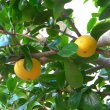

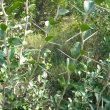

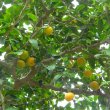
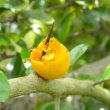
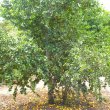
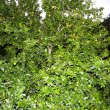
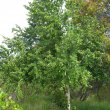
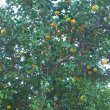


Comments
Where to plant
Hi
Just bought a Kei apple.
We are near a seasonal wet-land.
Half of the garden is very wet in winter. It floods during a storm but drains after but is very muddy all winter. Then it is sandy in summer.
The other part is very dry where I have Fynbos and Vetplante.
Which side should I plant it, to make it happy.
Thank you
Kei apple - wet or dry
Hi Liza
Definitely on the dry side. It will not like wet roots, especially in winter. You will need to water it deeply at intervals of two to three weeks during your dry summer, especially during the first couple of years. A thick layer of mulch about a meter all round the tree will be most beneficial in summer, but remove it during winter.
Kind regards
Lorraine
Kei apple
Excellent
Will do
Thank you
Kei apple
I want to plant a good secrity hedge along our back border which is at a busy road. We have clay soil, but are installing french drains at the moment, so think the roots won't be too wet. But it will be very close to this drain, would the roots be a problem? And how far away from the wall should they go? I noted a 1,5m spacing between them.
Root system - Dovyalis caffra
Can it be planted close to a brick garden wall? Does it has an invading and large root system?
Kei apple root system
Hi Franss
Dovyalis caffra does not have an invasive root system but most trees develop sub-surface roots that expand over time and can result in damage to walls and paving in later years. I would plant a Kei apple no closer than a meter away from the wall.
Kind regards
Lorraine
Where to buy seedlings?
Where could I buy seedlings of this kei apple in Gauteng? So sorry to read that your nursery has closed.
Kei apple in Gauteng
Hi Lala
Unfortunately I cannot help you. I have not been able to trace Kei apple seedlings in Gauteng. The only place I can find Kei apples for sale in this area is at http://www.watercombefarm.co.za/ourtrees.htm, but these are large plants in 50 litre bags. You could contact them and ask where they get their seedlings from.
The Kei apple is only half-hardy, meaning that they can only cope with a little light frost, which is why it is not often found in Gauteng. Most nurseries do not carry plants that are likely to die in cold weather.
Kind regards
Lorraine
Dovyalis caffra
Just a word of encouragement to Gauteng folk - I planted several of these Kei Apples about 8-9 years ago in my garden in Pretoria on top of a ridge that gets plenty of cold in winter and they have all survived and I was delighted to see that one of them is covered in fruit this year! I have also seen a large fruit bearing specimen in Johannesburg so it is possible to grow them here.
Dovyalis caffra growing in Gauteng
Hi Chris
Thank you for your valuable comment. It is so useful to get this kind of information directly from the area. I lived on the Highveld for some 50 years but it was in the southern area, which is colder and has much heavier frost than Pretoria.
Do you perhaps know where these trees can be obtained in Gauteng? None of the Gauteng indigenous nurseries I contacted seem to stock them.
Kind regards
Lorraine
Kei apple (Dovyalis caffra)
Hi Lorraine,
When we moved into a new house with no garden 11 years ago, we visited many indigenous nurseries and other general nurseries, looking for indigenous plants, so I do not remember off hand where I got my Kei Apples from!
However, I bought quite a lot of stuff from Witkoppen Wild Flower Nursery which he recently moved to a site close to the Coca Cola Dome in the northern area of Johannesburg. I also found that they were always most helpful and knowledgable with respect to anything indigenous! I also bought from Randome Harvest Nursery who have a branch at the Walter Sisulu National Botanic Garden, and Simply Indigenous Nursery at Hartebeespoort. It is quite possible that I bought my Kei Apples as small seedlings at the Government Nursery in Bloemhof in the NW Province, as I bought a fairly large number of seedlings of various indigenous trees and shrubs there at the incredibly "expensive" price of R1 per tree!!! Most of those trees and shrubs have done remarkably well!
If any of your readers should pass through Bloemhof, it may be worth their while to ask for directions to this nursery, that is nothing to look at but what they do have is incredibly reasonably priced! I have a strong feeling that my Kei Apple in fruit at present probably came from Witkoppen Wild Flower Nursery, but that I subsequently bought several others in Bloemhof, as the one in fruit is quite a bit larger than the others!
I trust that this information may be helpful to anyone who is looking for indigenous stuff!
Best regards,
Chris Hershensohn
Kei Apple
I have a small holding near Wellington in the Western Cape. The soil has a heavy clay texture. We want to plant a Kei Apple border along the fence. Full sun and very hot in January and February. Is the area suitable and any idea of a nursery where I can purchase?
Kei apple and clay soil
Hi Charles
Personally I would not consider this plant suitable for the conditions you describe. The Kei apple needs well-drained soil and has a preference for summer rainfall. Winter rainfall and poor drainage in clay soil will almost certainly cause root rot, bacterial or fungal problems are likely to occur and there is a strong likelihood that the plants will not fruit. Even if the plants survive the described conditions, heavy soil will result in very slow growth and stunted plants.
Should you wish to go ahead using the Kei apple, you would have to approach a few nurseries, find out if their wholesale suppliers carry the plant, and request them to order the plant for you.
Kind regards
Lorraine
kei apple fruit
I'm from Thabazimbi. Can someone tell me where I can find Kei apples (the fruit)
Availability of Kei apple fruits
Hi Christine
As far as I am aware, Kei apple fruits are not produced as a sale crop anywhere. The fruit does not ripen well when picked green and once ripe, it rots very quickly. This makes it commercially unfeasible. The only way you can get the fruit is to grow the plant yourself or find someone in your area who has a fruiting plant.
Kind regards
Lorraine
Kei apple fruits
My kei apple fruit started ripening at the end of November, and the last fruits have just finished about 5 weeks later so I would imagine one would be unlikely to get fruit again before November this year! We managed to make several bottles of jam, that is fairly "tart" but nice if one likes an acid jam!
Kei apple jam
Hi Chris
Thanks for your comment. Well done for making the effort to make jam. I have often been tempted to try but get put off by the tedious business of de-seeding and removing the flesh from the skins, especially as I find the smell unpleasant.
Kind regards
Lorraine
Kei apple
If anyone has some of these fruits or knows where to get some, will you please let me know. I'll come and collect them. My husband bought a few trees and wants to buy more. He just wants to see and taste the fruit first. Limpopo or Mpumalanga.
dovyalis caffra
i got seeds from karamoja in northeasten uganda dry area, planted them in southwestern uganda. they are doing well in slightly drought prone area. its found out that the seeds can not germinate after keeping them for 06 (six months). thank you.
Dovyalis caffra in Uganda
Hello Omutsyaba
Thank you for your comments and information. You are right about the seeds. The best rate of germination I had was when I planted the seeds immediately after removing them from the fruit.
The Eastern Cape is in a drought prone area and the Kei apple grows very well here.
I just found this really informative article about the Kei Apple and I thought you may find it interesting as well: http://www.southerntimesafrica.com/news_article.php?id=7383&title=The%20...
Kind regards
Lorraine
Dovyalis caffra
I have a good opinion that instead of using dead wood/ timber all focused Ugandans could plant Dovyalis caffra in all fences to boost vegetation cover. Can't it work a like in your beloved country? regards
Dovyalis caffra for fencing
Hi Omutsyaba
This is a very good idea. Some people are using it for fences but it would be good if a lot of people used this plant. The fruit is also good to eat and very healthy so it can help with nutrition as well.
Thank you for writing.
Kind regards
Lorraine
Kei Apple Fruit
Hi there,
Does anyone know where one could buy Kei Apple fruit? I'm in Cape Town but happy to pay for postage. I'm a brewer and love using local flavours!
Cheers,
Stefan
Looking for Kei apple fruit in Cape Town
Hi Stefan
There have been numerous requests for Kei apple fruit but so far no-one has been able to find a supplier. I suspect the fruit is not commercially viable: it must be ripe when picked as it does not ripen well when picked green, and the ripe fruit does not keep for any length of time and starts to rot within two or three days of picking. Apart from this the taste is an acquired one and the jam-making process is tedious.
You may find a gardener in your area who has fruit. Also send a request/query to:
http://www.sprig.co.za/
Kind regards
Lorraine
Cool. Thanks :)
Cool. Thanks :)
KEI APPLE
Hi can you please let me know whether i need two trees, a male and female? I do have a tree that gets flowers but then just loses the flowers. I have never had fruit.
Thanks
Louise van der Merwe
Kei apple: male and female plants
Hi Louise
Yes, a male and female plant are necessary for successful pollination to take place. Unfortunately I can give you no information on how to tell if you are buying a male or female tree as they look identical until they flower. Beware of nursery personnel who assure you that a tree is male or female - this is often done in these cases just to make the sale. Unless there is a male tree in the general area, you would have to plant 4 or 5 trees to ensure that you get both sexes.
Kind regards
Lorraine
soil erosion
How does Dovyalis caffra control soil erosion?
Kei apppe
Any one have a resepi for this jam
Discuss this plant
Share knowledge, ask a question or give an experience.